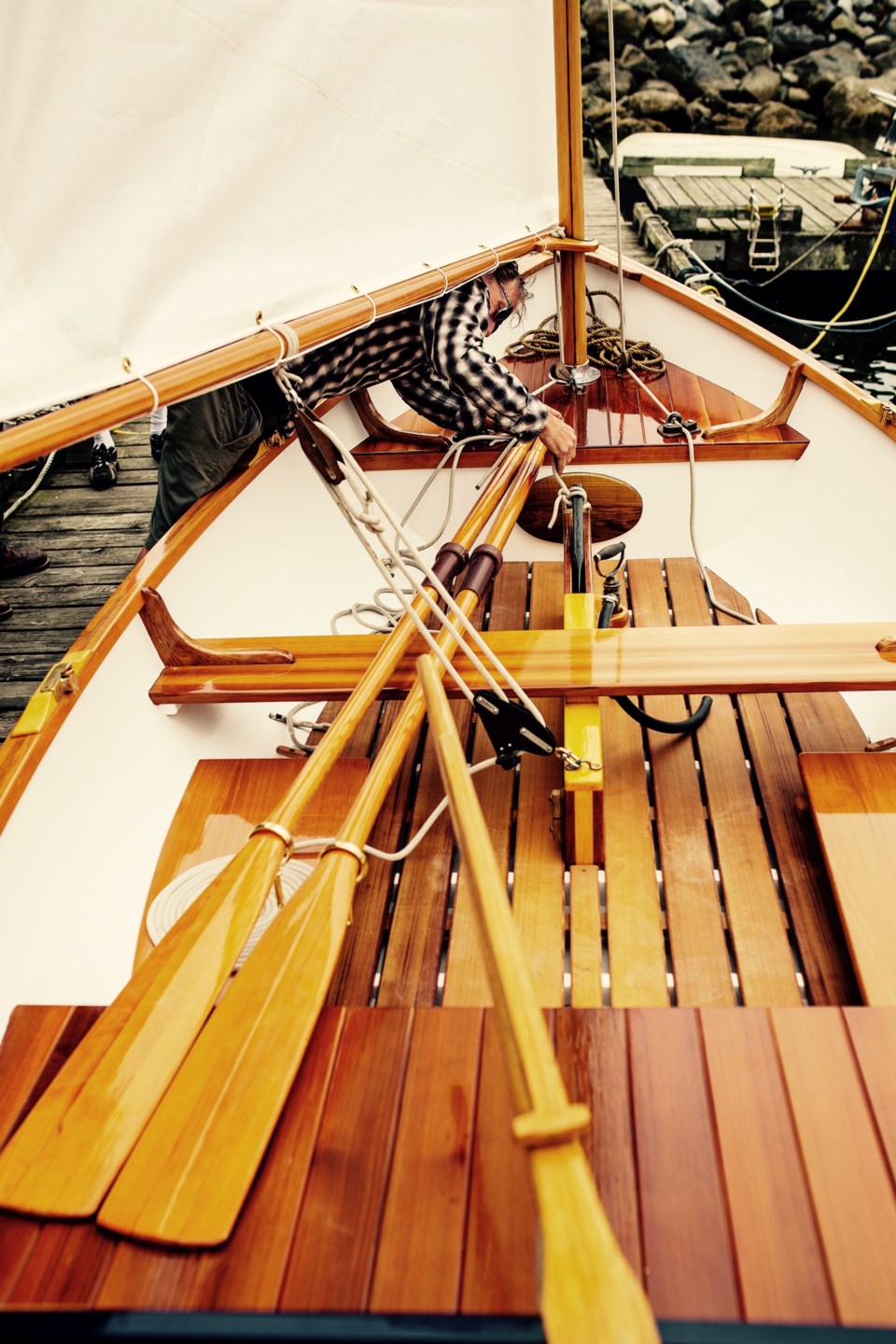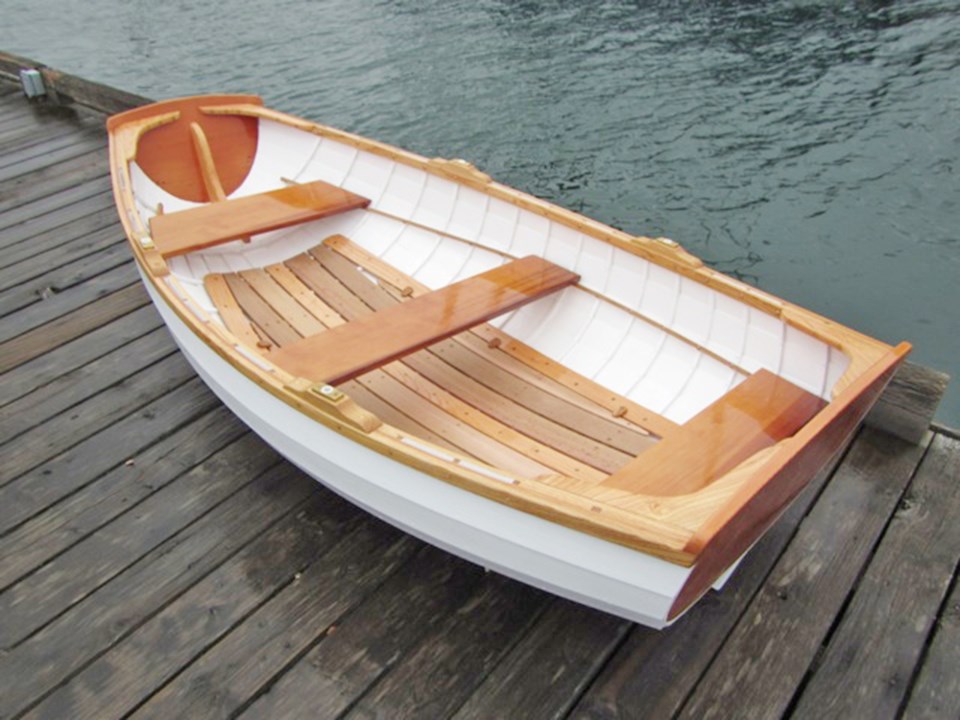Nestled behind the Maritime Museum, nudged up against the docks, lies a rustic-looking, wood-shingled floating workshop, home to the Oarlock and Sail Wooden Boat Club. Peering inside the large windows reveals the graceful arch of a wooden hull under construction. There is a timeless quality to the space, with members meeting weekly to plan, restore and build small wooden boats while sharing their skills and knowledge.
According to board member Valerie Arntzen, in the mid-1990s, wooden boat aficionado Alison Marshall decided she wanted to build a Swampscott Dory, but she needed a place big enough to do it.
Dave Bradford of Alder Bay Boats helped her find a location on Granville Island with another aspiring boat builder, calling the space the Boat Room. In 1995, they started a non-profit society with 40 members.
In 2001, the Vancouver Maritime Museum offered space at the Heritage Harbour, and Sam McKinney built and donated a floating workshop. “A new era for the club was born,” notes Arntzen. The club’s relationship to the Maritime Museum is still going strong. The museum offers the club dock space as well as event rooms for meetings and celebrations. It also includes the club in any event that involves the dock or boat building.
The club works on small wooden rowing or sailing boats under 14 feet, “as that is as big as will fit in our shop,” says Arntzen. They get a lot of inquiries regarding the history of small boats on the B.C. coast, and have had historical boats donated to them “that have been great assets to our club.”

“It’s really about learning together,” Arntzen adds. Some members have no experience with tools or building but have “an amazing amount of enthusiasm.” Others have years of boat-building under their belts. “The club seeks people who want to learn about or share their knowledge of small wooden rowing and sailing boats,” she explains.
One of the club’s long-term goals is to develop a wooden boat centre in Vancouver. “We would need partners and a lot of capital in order to pull this off but the dream is still alive,” says Arntzen, pointing out that Vancouver is a port city with a long maritime history.
Club projects have included the restoration of the Gartside Pram, an 8-foot row boat that had not been worked on for several years. When a group of new members and board members joined, the burst of fresh energy helped the club finish in a year. It was then sold so they could “add to the coffers and plan for another project.”
They also worked on the Ragna, a 12-foot Riff sailing dinghy designed by prolific American boat builder Paul Gartside, using strip plank construction. “Everyone learned a lot from this build and she is one of the prides of the fleet,” says Arntzen.
Their newest build is a Providence River Boat, which will be a 12-foot gaff-rigged sailing/rowing dinghy as well. “This one is a real challenge, as we don’t have a proper set of plans.” It was built in 1875 as a crabbing boat by a man named Buttonswan. Members have been poring over various pictures and carefully planning the next step. “She will be a beauty when she is done next year,” Arntzen says.
And, last week, the club rowed their boats over for the annual Granville Island Wooden Boat Festival to set up for display, and took part in the first annual Heritage Dock Classic Race.
Some of the most rewarding aspects of being involved in the club are not only building boats mostly with hand tools, but also “keeping the maritime traditions of building, rowing, sailing alive, and connecting with other like-minded people here and afar,” says Arntzen.
The goal is to foster interest in and enjoyment of the craft. And, she notes, the club especially loves it when parents bring their kids, “because that is our future.”



